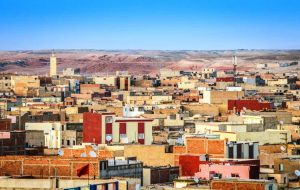Islam and animism intertwine around the great mosque of Bobo-Dioulasso, the cultural and spiritual capital of the country.
Bobo-Dioulasso, in Burkina Faso, is a city of great charm, where the passage of time is marked by the muezzins who call to prayer, but also by the succession of animist ceremonies and the stories of the griots, the traditional storytellers who keep memories alive. And the great white mosque is the symbol of this rich cultural and spiritual mix.
In the west of Burkina Faso, the Bobo communities stand out for their historical resistance to any form of hierarchy or centralized power, categorically refusing to submit to any political regime, whether external or internal.
This resistance has led the Bobo communities to maintain a certain isolation from the ancient empire of Mali and the subsequent Sudanese dominations.
During the 19th century, the North suffered violent incursions by Peul horsemen, aimed mainly at plundering crops and capturing slaves. In contrast, in the South, the Bobo were unable to escape the domination of the Islamized Diolà from the Kong Empire, who settled in Bobo-Dioulasso. However, the latter, focused on the trade of gold, salt and kola nuts, exercised limited political power, refraining from intervening in the lives, institutions and religion of their subjects.
The instability of those times pushed the Bobo to unite in confederations of villages and to strengthen their defences. The principle of concentration of their villages, rooted in the logic of their highly integrated community system, was further consolidated in the face of continuous external threats. In short, in the Volta River Valley, the various communities, predominantly Bobo and Bwa, developed an original and coherent model of community life, resisting any form of state authority.
In 1888, Captain Louis-Gustave Binger was the first European explorer to penetrate southern Bobo territory, collecting detailed information on the ethnic group. However, until 1897, when a French column captured the town of Sya (now Bobo-Dioulasso), inaugurating the colonial period, the Bobo remained largely ignored by Europeans and the French understood little of their culture.
A place of peace. In the centre of Bobo-Dioulasso, near the ancient animist nucleus of Dioulasso Ba, stands an earthen mosque, built in the early twentieth century, similar to those found in Mali and Niger, characterised by earth structures in the shape of a termite mound, with ogival spires. This mosque is currently being restored, with the aim of its being included in the UNESCO World Heritage list; the construction site is financed by local banks. It is located in a large outdoor prayer space, overlooking the old city.
The Bobo Mosque is built with laterite bricks cut by the craftsmen of Dioulasso Ba and covered with several layers of lime and earth, not just any earth but just that of empty termite mounds, the most resistant earth there is. The spires, which resemble the ventilation tunnels of termite mounds, are pierced by wooden poles, and trunks from special trees such as kaicedra (huge trees, characterised by dusty and suffocating fruits) or balafon trees.
On the main facade, to the east, there is the men’s minaret, the tallest and most imposing spire, while on the north, lateral facade, there is the one under which women pray, smaller although tall and visible. The interior of the mosque is narrow. An intimate space, isolated from the outside.
Essential and labyrinthine. Thick walls separate it from the heat of the dry season, from the harmattan, the dusty Sahara wind that comes from the north, and from the humidity of the rain. The timbers that protrude perpendicular to the facade, like poles of some ladder, are used to remake the skin of the mosque, the plaster, which should be redone every year after the rains.
Those poles also collect moisture in the plaster, drying it. The maintenance of the building is the responsibility of the community. In cities like Djenné, the renovation of the facade is an important celebration that pits the families of artisans and bricklayers against each other. Each element of the building, semantically, refers to the natural world, to the unfinished, to the changeable. The vertical elements give us directions, determine the use and define the space that surrounds the mosque.
Legends and religion. The animist centre of Dioulasso Ba is steeped in various legends. The most famous, beloved by the locals, tells of the origin of the city around the Dolotier Sya, famous for producing the best millet beer in the region. This beer, which requires three days of brewing, spreads its aroma throughout the city every Saturday morning, becoming more intense and almost fermented towards evening.
In the centre of Dioulasso Ba, on the main road, is the mother house, the oldest building in Bobo, now a museum. In Dioulasso Ba, access is permitted only if accompanied by a local inhabitant, appointed as an official tourist guide.
These young cultural mediators tell ancient stories and explain that the land is sacred and inviolable, since the maison mère, the mother house, is symbolically considered the beginning of the long lineage of the ancient founder and also his final resting place.
The descendant men and women, who have reached a mature age and have procreated, are buried directly in the soil of the house. This happens in many downtown neighbourhoods, ancient settlements that merged and formed the city.
Today, the animist centre and the Muslim Mosque coexist in a central space of the city but are separated by a very busy asphalt avenue. In the context of the spaces of the mosque and Dioulasso Ba, the culture of the Bobo reveals a deep connection between religion, rituals and physical spaces. The passion of the Bobo for their faith, rich and demanding, is expressed through incessant parties and celebrations that inhabit public spaces, transforming them into spaces of cultural and historical expression and updating tradition. Masks, especially those made of leaves, play a central role in this religious system known as the cult of “do”. These masks, apparently rudimentary but rich in meaning, perform the crucial function of purifying and protecting men and their homes through contact and leaves that act as amulets. (Chiara Rigotti/Africa) – (Photo: The Grand Mosque of Bobo-Dioulasso. CC BY-SA 2.0/qiv)






